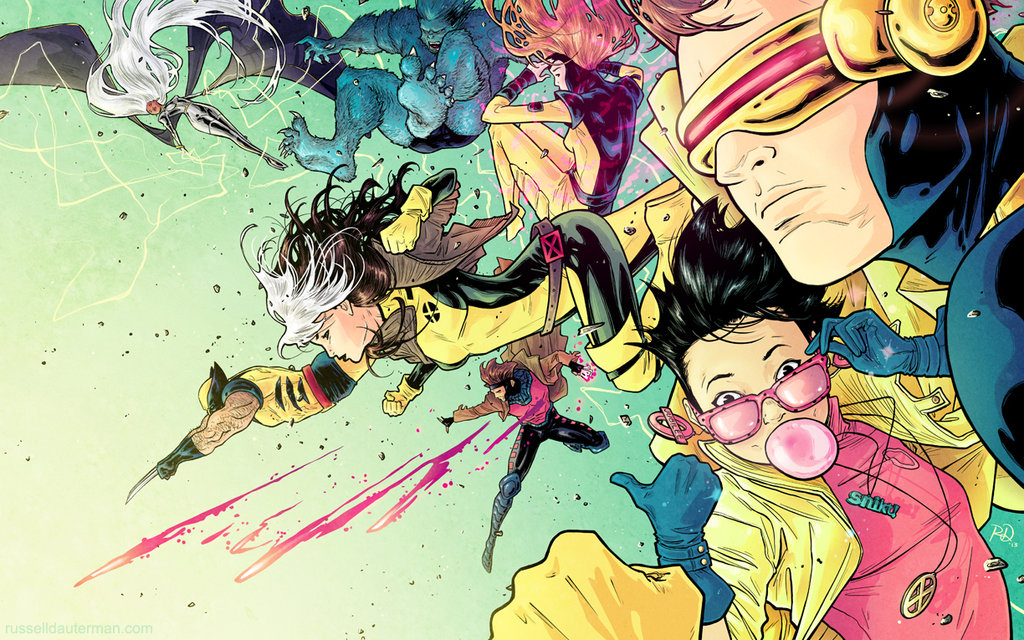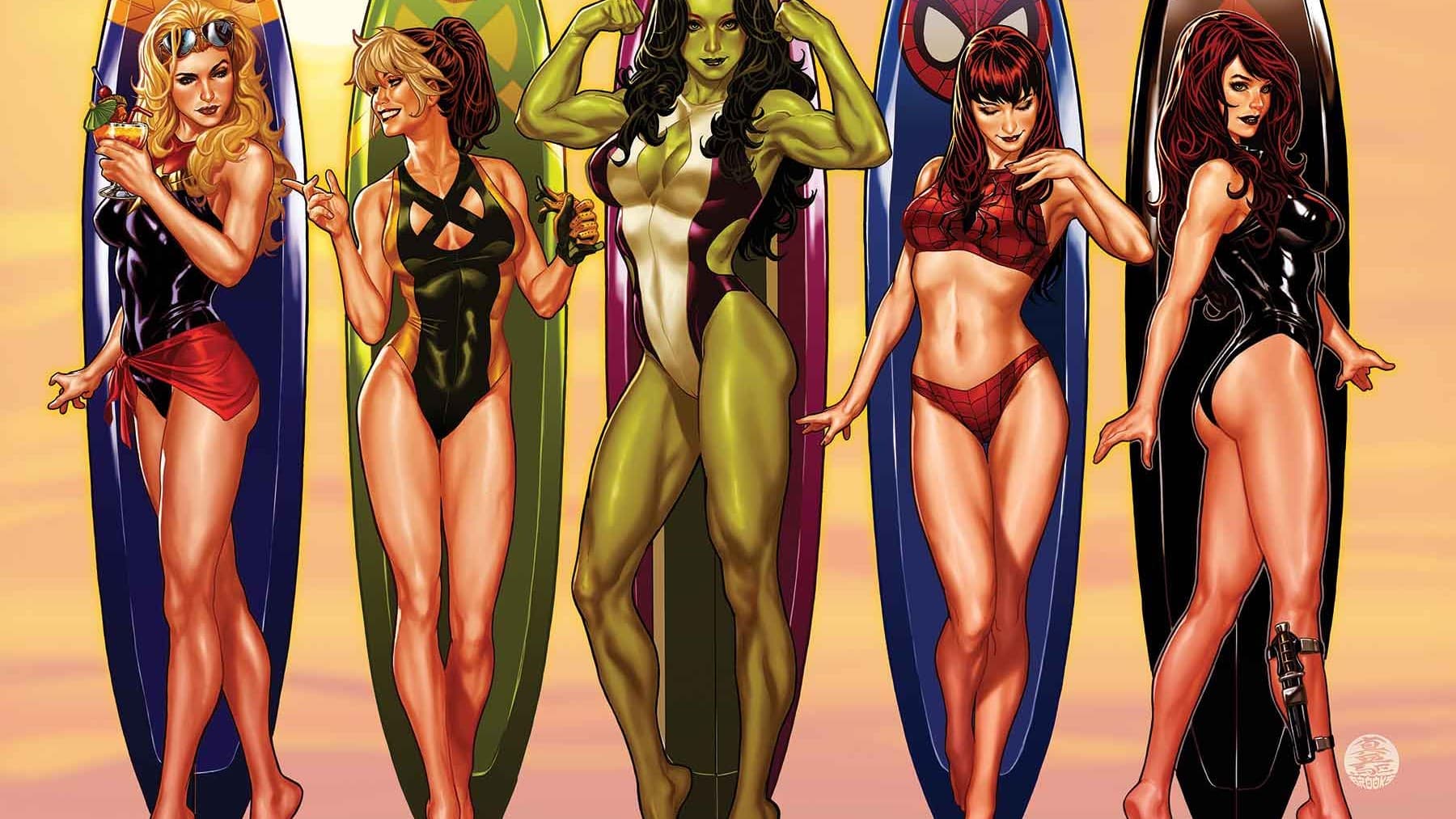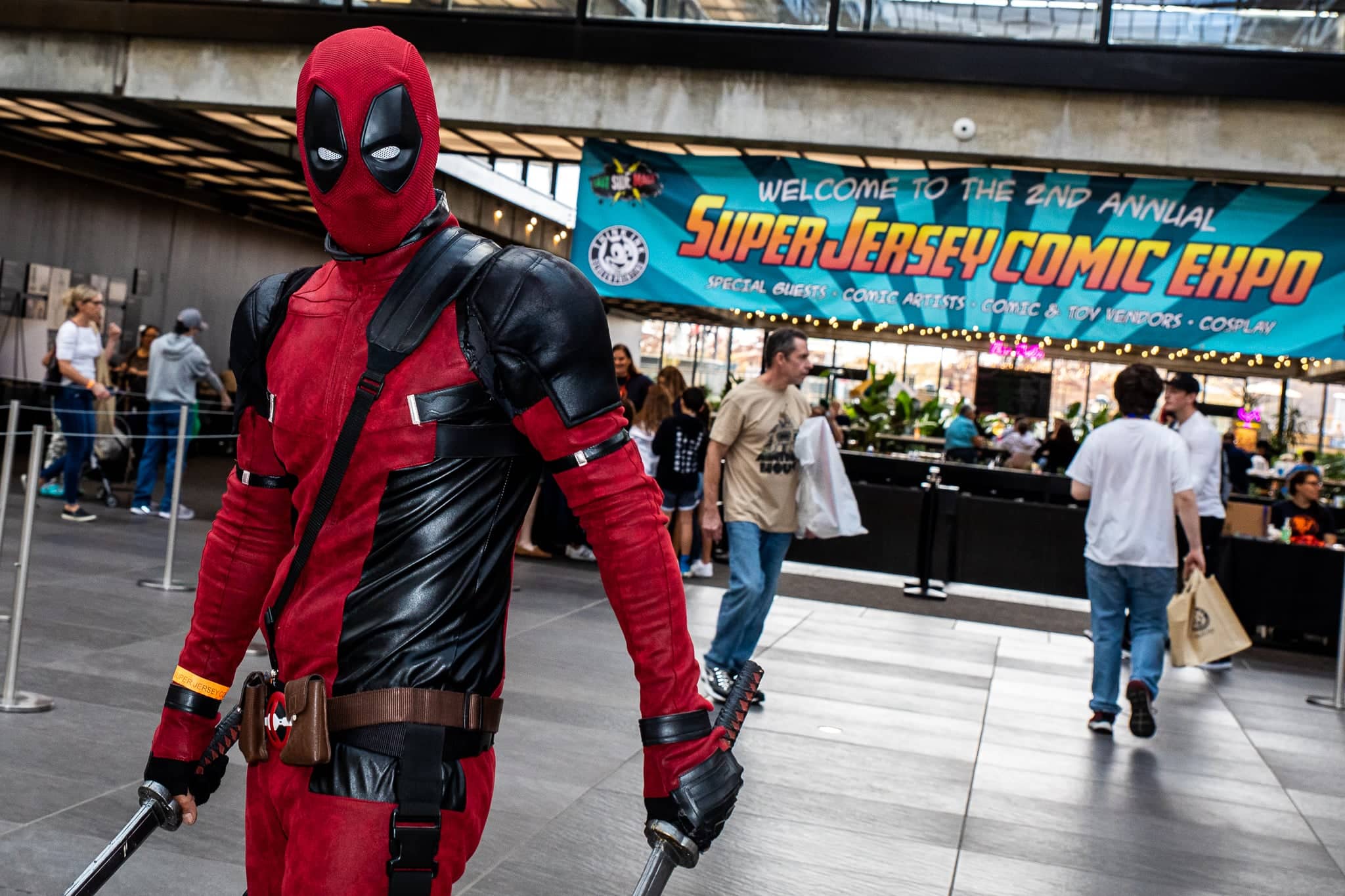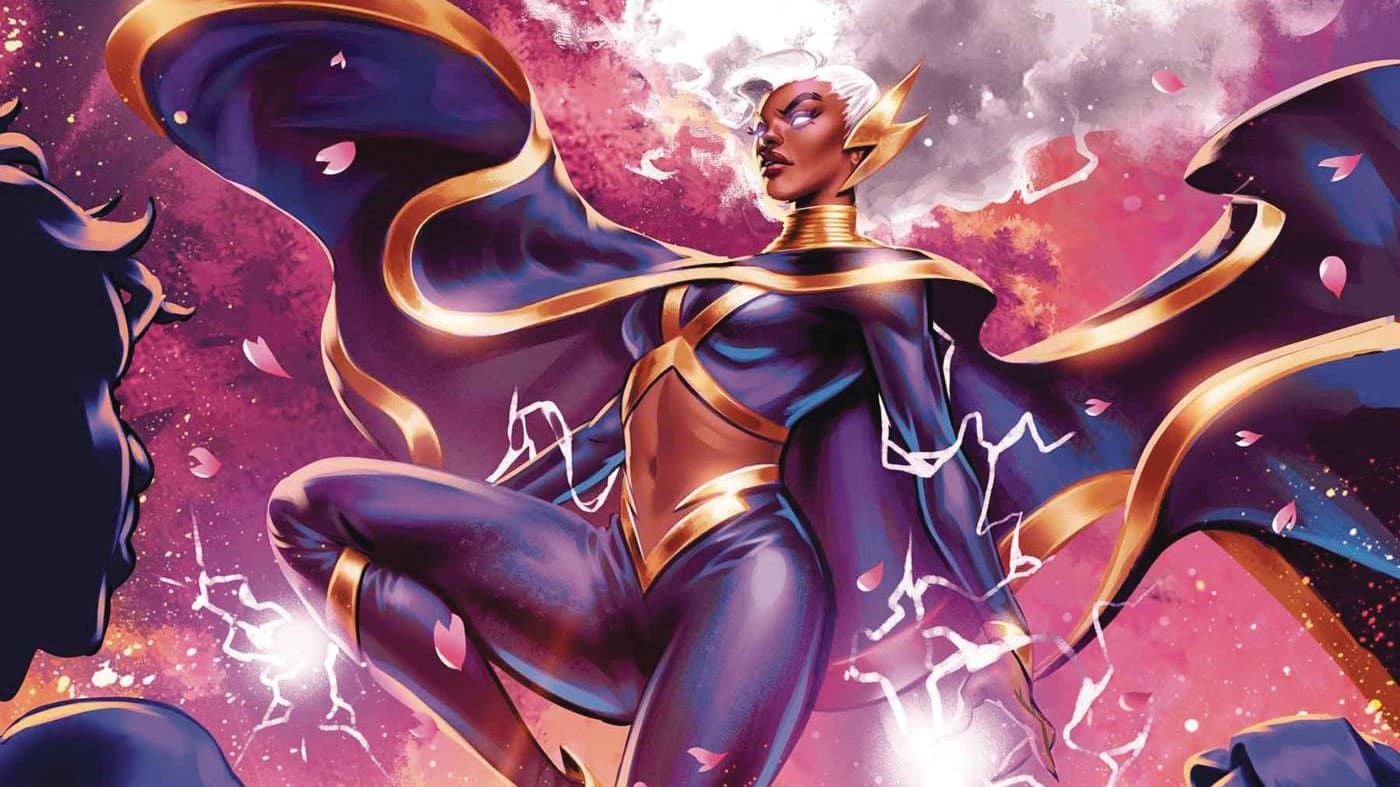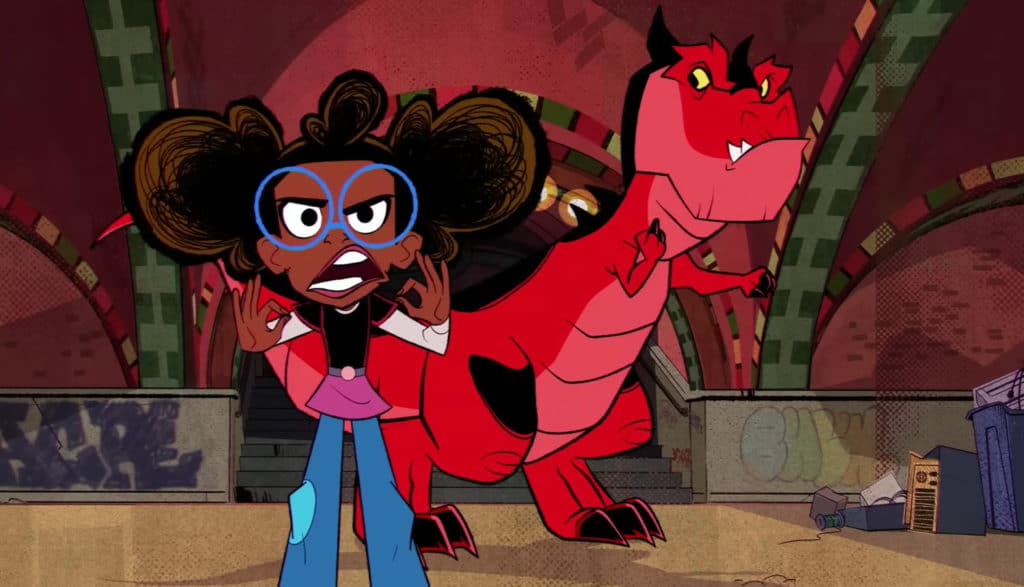There are a lot of models for how to assemble an ensemble cast. Some of it is going to be dictated by the show’s concept and setting – Star Trek modeled its cast after the functions of a ship at sea (or space as the case may be): A captain, first officer, helm, security, medical, engineering. Brooklyn Nine-Nine is about a police precinct, so you’ve got a captain, sergeant, admin assistant, and a bunch of detectives. B99 is instructive here because you have a finite few jobs that need to be filled and an ambiguous pool of other characters. How many? How do you choose? The answer is going to lie in both the way you want the characters to interact with each other (group dynamic) and the types of stories that you want to tell.
Over the X-Men franchise’s long history, the size and membership of the rosters of the various teams has changed a lot. Sometimes a set of characters works very well, and others not. While there are a lot of contributing factors to whether a particular run is successful, the team roster is the foundation on which the stories that make up that run are built. They are the ingredients that the creative team uses to make their X-Men cake. I would argue that there is are seven necessary roles to be fulfilled in an X-Men (and X-Force, X-Factor, etc) team which give a creative team the tools they’ll need to tell solid X-Men stories.
I call these roles collectively as The Template – mostly because it seems to be the model that Marvel used in the 80s and 90s when expanding the X-Men franchise. They are: The Home Fires, The Team Leader, The Girlfriend, The Best Friend, The Heavy, The Innocent, and The Outsider. Together, they make up the essential structure of an X-Men team and allow the book to tell the types of stories we’ve come to associate with the franchise – stories of redeemed adversaries, outlandish adventures, and finding a family in a hostile world.

The Home Fires
This character usually stays at the team’s base of operations, working as a point of communication for the team as they go on their adventures. Professor X was probably the most notable example of this type of character, and while his role had a lot to do with holding the thematic “Dream of peaceful coexistence between mutants and humans” core of the books, that isn’t an essential part of the role. In fact, the function of this role is usually about technical and logistical support and spouting exposition for the benefit of both the team and the reader. “Team, you have to go to the Canary Islands because there is a mutant in distress!” that sort of thing.
Often, this is an older character so in the team dynamic, they played a parental or mentorly role, dispensing wisdom along with moral guidance. This isn’t a requirement, though, and in some runs, this role is more like a dispatch operator.

The Team Leader
This character is the most classically heroic on the roster. The Boy Scout. He (or sometimes she) does as it says on the tin – leads the team in the field, directing action in a fight, thinking strategically, always trying to do the right thing and the most good. The Team Leader is the team’s ethos in application, featuring in stories where that ethos is put to the test.
The Team Leader feels responsible for all the other members of the team and usually has a closer relationship to The Home Fires than the rest of the team, both because of the mentor\mentee dynamic and because the Team Leader’s feelings of responsibility for the team make him feel isolated. The Team Leader is often paired up with The Girlfriend and\or The Best Friend in order to alleviate that. Team Leaders without those relationships tend to come off as robotic, aloof, or off-putting which can cause a problem for the roster as the Team Leader is the face of the team to the readership.
Many times, The Team Leader is meant for the reader to project their aspirations onto. The Team Leader is who the reader feels they are (or who they could be) at their best.

The Girlfriend
This character is most defined by their frequent emotional support and nurturing behavior. Like The Best Friend, The Girlfriend is often a supporting character in other character’s stories (with some famous exceptions), opening up isolated characters like Team Leaders or Outsiders or nurturing Best Friends or Innocents. This character is often female (the name comes from the most famous example: Jean Grey), but not always. As a matter of fact, Banshee often finds himself in this role.
The Girlfriend is often relegated to a supporting role, rarely getting the spotlight (with a few notable exceptions). And to be clear, not all romantic interest characters are The Girlfriend. Trish Tilby, for example, couldn’t claim this title. This is a role about supporting and nurturing the team, not just who a team member is dating.

The Best Friend
This character is genial, charismatic, and typically lighthearted. But don’t be fooled, he’s ride or die and when the chips are down, he’s got your back. This character is often a fan favorite. Where most characters have their share of detractors, few fans can say an ill word against most Best Friend characters.
Best Friends are usually featured in buddy-duo type stories, and give more isolated or closed-off characters a way to open up. In many ways this character is the hetero-male counterpart to The Girlfriend, serving a similar function, but in a different context. Where the Girlfriend’s tone is soothing, The Best Friend is often more lighthearted.

The Heavy
Cape books are all about punching and astounding feats of strength and so they demand that there be one character to lift the heavy stuff, endure the unendurable, and to punch harder than anyone else can punch. Someone’s gotta carry that weight, and it’s usually The Heavy.
Because this character has very simple requirements, The Heavy also sees the widest variety in form and personality, from the gentle giant Colossus to the goofball Strong Guy, to the angry and revenge driven Warpath. The Heavy can also be the Team Leader as in the case of Captain Britain. If any character exemplifies how flexible The Template can be, it is The Heavy.

The Innocent
If The Team Leader is the character that a reader is meant to aspire to be, The Innocent is the character the reader feels they are. The Innocent is meant to be a reader insert. This character is young and naive and emerging into adulthood with all the discoveries and pitfalls that entails. Sometimes The Innocent is a rescue, a victim given refuge or a stray orphan that the team has found (sometimes both!).
As well, this role gives the book the opportunity to plainly explain its themes as if it’s new information. The Innocent is a character who is constantly learning lessons, but ironically, is also the least flexible role in The Template – it takes a very long time for an Innocent to be allowed to grow into another role. X-Men stories often don’t use their regular Innocents, instead inventing brand new one-off characters to serve that role (for a lot of reasons).
However, The Innocent fits into the widest variety of stories, from the standard Marvel coming-of-age-super-powers-as-metaphor-for-entering-into-the-adult-world stuff, to supporting characters to remind Outsiders, Home Fires, and Team Leaders what they’re struggling for. They also play off of Heavies, Girlfriends, and Best Friends – letting them explain the team’s ethos and giving some lower stakes situations in which to play their own roles. Although many times The Innocent can be a cloying, cutesy, annoying tag-along, (or even a Mary Sue) The Innocent is critical in helping a book convey its central themes.

The Outsider
The Outsider is just that, an Outsider. He is a loner, a wild card. He is unfamiliar or even hostile to the group’s core values, the role is about revealing the themes of the story by way of contrast. The Outsider does something out of line which gives the Team Leader or Home Fires (or sometimes Best Friend or Girlfriend) a teachable moment. “Bishop, in the dark future you come from you might have killed suspected criminals, but that’s not how we do things here.” In this way, they share some purpose with Innocents.
But unlike Innocents, The Outsider is a more flexible position – a major part of their story is redemption and reconciliation into the group and that can only remain unfulfilled for so long before it either leads to conflict or fizzles out. Rogue, for example, entered the team as an Outsider, but quickly integrated and transitioned into a Heavy, and even a Team Leader.
Outsiders tend to be fan favorites – they’re often independent, roguish, and appeal to the id of the typically adolescent audience in a different way to Team Leader (superego) and Innocent (ego).
This role is often where an X-Men team is out of balance, either with too many because they’re often fan favorites and their loner streak gives some space for development into a solo series or too few instead relying on the antagonists to carry the weight of this role.
That’s the theory, anyway. It’s no panacea – no matter how closely the team roster adhered to The Template, it wouldn’t make The Draco a good idea. But I’d argue that the tightest, clearest, and most consistent runs on the various X-Men franchise books all had this team structure in common. And similarly, the roughest and most directionless runs are those that feature teams with vacancies in The Template or doubled-up on too many roles. Bear in mind, too, that this isn’t a rigid rule. These are tropes and can be as valuable when adhered to as when subverted.
Next time we’ll put the theory to the test by looking at some case studies where we’ll see how closely teams followed The Template, how those characters played off each other in their roles, and whether the stories told during that time were served by the team dynamic.

